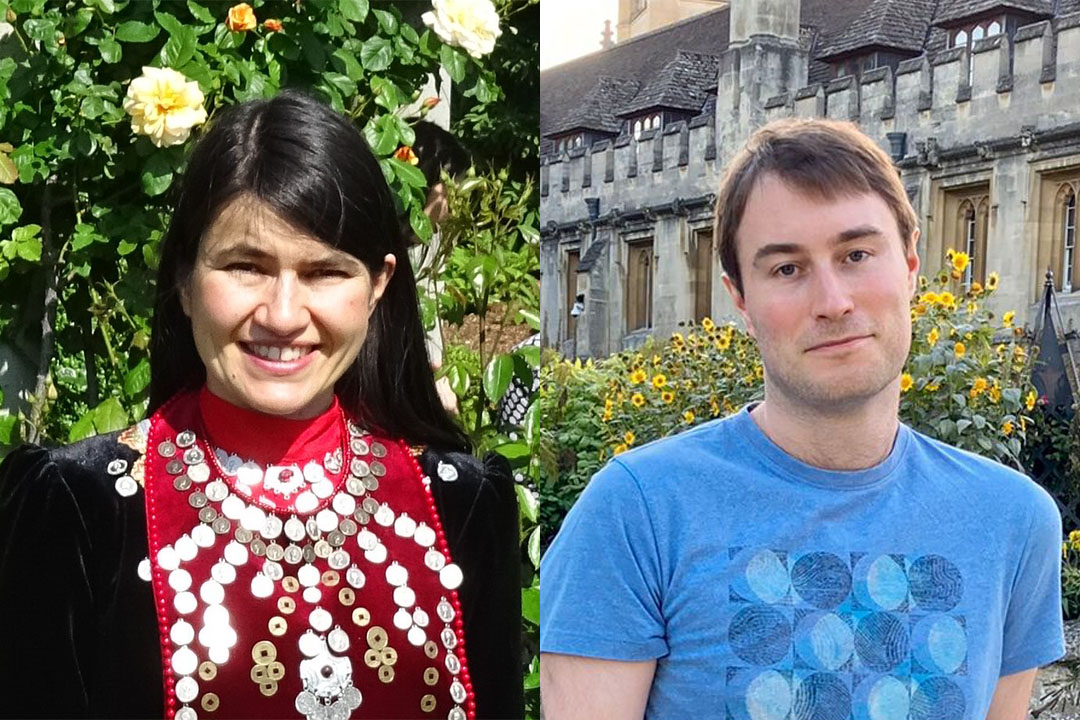
USask research to benefit from prestigious Banting Fellowships
Two researchers have been awarded highly competitive fellowships to carry out research at the University of Saskatchewan (USask) in support of self-determination for Indigenous community disaster displacement, and to get to the root of why Earth’s first animals made the move from oceans to land 420 million years ago.
Dr. Lilia Yumagulova (PhD), with USask, and Dr. Anthony Shillito (PhD), from the University of Oxford, England, will each receive $140,000 over two years as part of the Banting Postdoctoral Fellowships, a federal program which aims to attract and retain top-tier postdoctoral talent, both nationally and internationally.
“USask is pleased to host these exceptional young scholars as they strengthen their skills and become research leaders of tomorrow,” said Vice-President Research Baljit Singh. “These fellowships have been the catalyst of many great discoveries at our institution, and we know these projects will contribute to the growing impact of our dynamic research culture.”
“We are here to stay”: The role of self-determination for Indigenous disaster risk reduction
Yumagulova’s work focuses on understanding how communities adapt to rapid, multifaceted disasters and crises. Her research with supervisor Dr. Simon Lambert (PhD), associate professor of Indigenous Studies in USask’s College of Arts and Science, and with support from USask’s Dr. Caroline Tait (PhD) and Dr. Warrick Baijius (PhD), will explore the barriers to, and enablers of, self-determination in forced displacement and planned relocation of Indigenous communities due to disasters and climate change.
Indigenous people in Canada are disproportionately affected by disasters and climate displacement due to historical and ongoing racists policies, such as the Indian Act that confiscated land, banned cultural practices, and forced people onto reserves, sometimes in hazardous locations.
Though much has been documented on the effects of short-term evacuations of Indigenous communities, Yumagulova’s research will address gaps in knowledge by focusing on recurring evacuations and prolonged displacements and relocation.
Led by an Indigenous Circle of Advisors, this project will include environmental and literature scans, Indigenous practitioner interviews and sharing circles, and community-based research to understand lived experiences, particularly of Indigenous women and their unique capacities for dealing with such displacements.
“Dr. Yumagulova’s passion and commitment in supporting Indigenous communities in disasters is well known across Canada and beyond, empowering Indigenous youth to work within their communities for a more resilient future to what are increasingly regular and intense disaster events,” said Lambert. “The Banting is a timely recognition of both Dr. Yumagulova’s abilities and the importance of her work, which will elevate USask in the disaster risk reduction space.”
“I am honoured to be working alongside the Indigenous Circle of Matriarchs and the communities across Turtle Island for this project that highlights the role of women and Indigenous capacities for disaster risk reduction and planned relocation,” said Yumagulova. “I am grateful to be joining a stellar group of Indigenous scholars within the Indigenous Studies department at USask who bring an extensive unparalleled expertise in community-led research.”
This work will result in an evidence-based overview of culturally safe practices that can alleviate the outcomes of disasters and help prepare for climate change relocation of Indigenous communities.
From oceans to land: Why Earth’s first animals made the move
Shillito’s work seeks to understand the details of terrestrialization – when and where animals first made the transition to land from oceans, and which were the first to establish continental ecosystems.
His project with supervisors Dr. Luis Buatois (PhD) and Dr. M. Gabriela Mángano (PhD), professors of geological sciences in the College of Arts and Science, will address the biggest remaining question of the process: Why?
Existing research has shown that animals could make small excursions onto land long before life on the continents became established 420 million years ago. Shillito will investigate why this transition took so long, considering the most significant factors that led animals to establish permanent non-marine communities, such as availability of food resources, less hostile living conditions, and reduced competition and predation.
Fieldwork, database analyses and literature review will provide a multifaceted approach to answer this novel question surrounding terrestrialization. The multidisciplinary approach combines geological and biological evidence to produce a complete picture of the process. Ultimately, tangible evidence can be found only through ichnology – the study of trace fossils, such as footprints or burrows in rock that provide evidence of the behaviour of the organism that made them – and sedimentology, to understand the physical landscapes and habitats they occupied.
“Anthony has done impressive work for his PhD. In order to explore the first steps of the terrestrialization process, he has gathered field data from a wide variety of areas around the world, including the United Kingdom, Australia, and the Canadian Arctic,” said Buatois. “Also, he has already published a series of fascinating studies on this topic. He will bring his ideal background to USask, and I foresee fruitful interactions with our research group.”
“Since the start of my PhD I’ve closely followed and admired the work of the USask ichnology research group led by Dr. Buatois and Dr. Mángano, so I’m thrilled to have the opportunity to work as part of such a world-leading team,” said Shillito. “I’m hoping to learn a lot during my time at USask, and to continue to establish myself in the field.”
The project will deepen our understanding of one of the most significant events in the history of life and the planet – the initial transition from living in the oceans to living on land. This novel work also aims to resolve longstanding tensions between molecular and geological analyses, opening the way for increased collaboration in the field.

